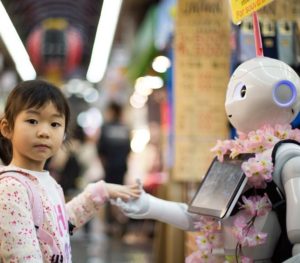
When trying to explain what techno-animism is, there is probably no word more suitable than ‘personification’. Essentially, it refers to the practice of presenting inanimate objects as though they are sentient, i.e. providing them with a lifelike appearance or animal or human characteristics.
The history of techno-animism

This practice is usually associated with Japan, as it is not only highly developed there, but it also stems from the historic religious practices of Japanese people. Building on Shintoist religious practices, it relies heavily on the Japanese tradition to live in harmony with the world that surrounds them, regardless of whether it is sentient or not; plants, animals, and other natural elements are all equally respected. Japanese people accept all of these elements as an inseparable part of their daily life.
How does this relate to technology?
The rapid development of technology can be overwhelming for both individuals and groups of people; this is not only the case with the contemporary period -people were known to respond harshly to new inventions (Luddites in the 19th century are one of the best examples). However, this does not apply to Japanese people, who accepted technology far better than most countries around the world. Instead of viewing it as disruptive and unhealthy, they integrated it to the best of their ability into their everyday life.
Where can we see techno-animism at work?

Arguably, any time we look at a robot that resembles a human or an animal and think that it is cute or attractive, we are participating in techno-animism. Japan is clearly ahead in this, compared to all the other countries. The newest addition to this phenomenon is probably the new trend of restaurants in Japan, where the waiting staff is entirely comprised of robots. All communication that happens in the restaurant is either human-to-robot or robot-to-human.
Techno-animism in the sex industry
One of the more extreme examples of this practice is the development of the sex industry in Japan, which is threatening to become almost exclusively machine-oriented. Communication and sexual relations were things reserved only for humans; however, with the development of technology, it has become possible to do both of these things with a machine, which is no longer considered an inanimate object. This, of course, has its downsides and reduces the need for interaction between humans, which is a potential cause of depression, especially in young people.
What is the future of techno-animism?

Although this is a practice that may seem unusual to people who are not from Japan, it is very difficult to say whether it is or isn’t justified. Especially with the development of more sophisticated technology, like artificial intelligence, we might have to start treating all machines as sentient beings in the near future.





